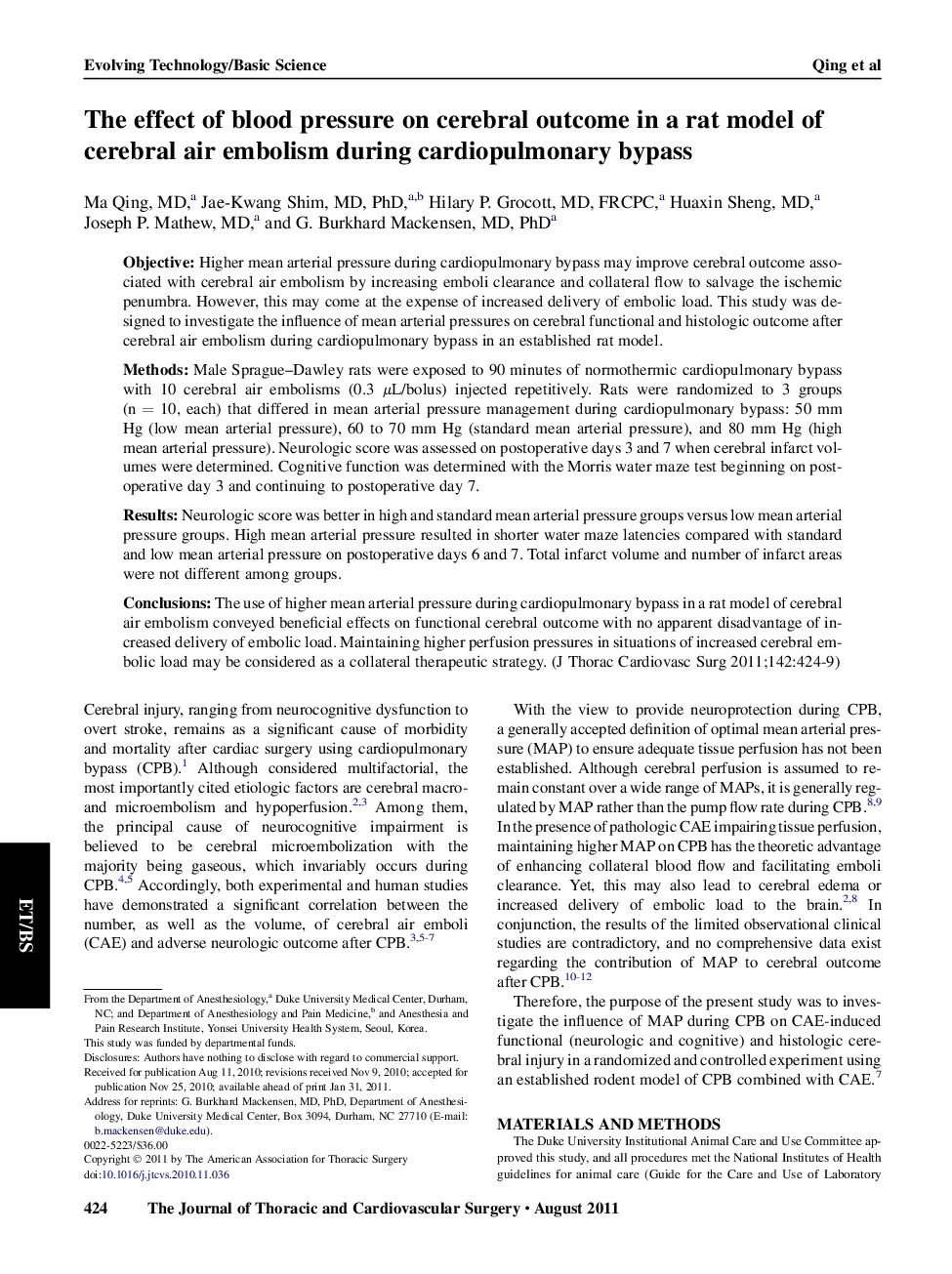| Article ID | Journal | Published Year | Pages | File Type |
|---|---|---|---|---|
| 2982597 | The Journal of Thoracic and Cardiovascular Surgery | 2011 | 6 Pages |
ObjectiveHigher mean arterial pressure during cardiopulmonary bypass may improve cerebral outcome associated with cerebral air embolism by increasing emboli clearance and collateral flow to salvage the ischemic penumbra. However, this may come at the expense of increased delivery of embolic load. This study was designed to investigate the influence of mean arterial pressures on cerebral functional and histologic outcome after cerebral air embolism during cardiopulmonary bypass in an established rat model.MethodsMale Sprague–Dawley rats were exposed to 90 minutes of normothermic cardiopulmonary bypass with 10 cerebral air embolisms (0.3 μL/bolus) injected repetitively. Rats were randomized to 3 groups (n = 10, each) that differed in mean arterial pressure management during cardiopulmonary bypass: 50 mm Hg (low mean arterial pressure), 60 to 70 mm Hg (standard mean arterial pressure), and 80 mm Hg (high mean arterial pressure). Neurologic score was assessed on postoperative days 3 and 7 when cerebral infarct volumes were determined. Cognitive function was determined with the Morris water maze test beginning on postoperative day 3 and continuing to postoperative day 7.ResultsNeurologic score was better in high and standard mean arterial pressure groups versus low mean arterial pressure groups. High mean arterial pressure resulted in shorter water maze latencies compared with standard and low mean arterial pressure on postoperative days 6 and 7. Total infarct volume and number of infarct areas were not different among groups.ConclusionsThe use of higher mean arterial pressure during cardiopulmonary bypass in a rat model of cerebral air embolism conveyed beneficial effects on functional cerebral outcome with no apparent disadvantage of increased delivery of embolic load. Maintaining higher perfusion pressures in situations of increased cerebral embolic load may be considered as a collateral therapeutic strategy.
